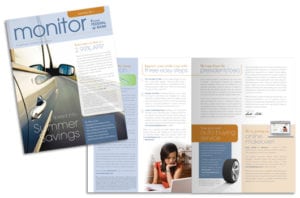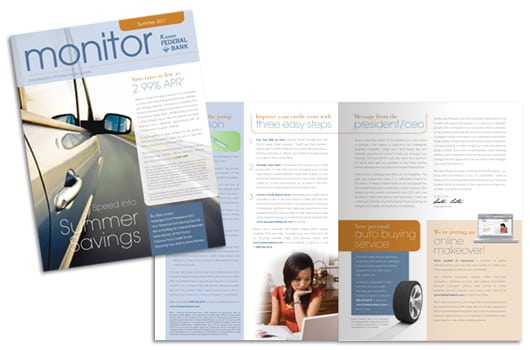As someone who has helped numerous clients promote and build their brand, I always suggest a multi-channel approach to marketing. I do this because, based on my research, I know that consumers today move across online and offline channels during their journey to purchase a service or product.
While I understand that the online and offline worlds work together to help consumers arrive at a decision, sometimes my clients don’t truly appreciate the importance of a balanced marketing plan. I often hear people say, “We think digital is a more cost effective marketing tool than print.”
I’d like to share a couple of important factors that I think every brand needs to consider when discussing marketing, budgets, consumers and the path to purchase.
Saving Money: at what cost?
Some brands, due to budget concerns, think about focusing their marketing efforts on digital rather than print. Moving a print newsletter online may save on the printing and mailing costs but are there unforeseen consequences to such a move?
 A recent Virginia Tech study shows that marketers should think twice before making the jump to an all-digital publication. A print version of Virginia Tech’s alumni publication was sent to some of their subscribers while others received an email directing them to the online version of the magazine. These subscribers were then contacted by telephone and asked a series of questions about the publication. Take a look at some of the results.
A recent Virginia Tech study shows that marketers should think twice before making the jump to an all-digital publication. A print version of Virginia Tech’s alumni publication was sent to some of their subscribers while others received an email directing them to the online version of the magazine. These subscribers were then contacted by telephone and asked a series of questions about the publication. Take a look at some of the results.
More people remembered getting the print magazine
82% of those who received the print version remembered receiving the magazine
49% of those who received the online version remembered getting the email
More people opened the print magazine
77% of those who remembered receiving it viewed the magazine
49% of those who remembered receiving the online invitation actually clicked through and viewed the publication
In addition, people who viewed the print version recalled a significantly greater number of articles than did those who viewed the online version.
An alumni magazine can be a powerful marketing tool. It can sell to both past and future customers. But, if far fewer subscribers open, read and remember the content of the magazine, is it “cost-effective” to move that magazine from print to online?
The author of the study said, “ceasing a print publication in favor of an online-only publication might hurt the effectiveness of an organization’s marketing communication, and managers should not make the decision based on cost alone.”
Understanding the Science of Marketing
Another important factor to consider when discussing budgets, print and digital marketing is the effect of print and digital advertising on the brain of the consumer. Canada Post and neuromarketing research and strategy firm True Impact Marketing conducted the largest study of its kind aimed at understanding direct mail and digital advertising’s relative impact on the brain.
Individuals were shown promotional materials. Then using electroencephalography (EEG), eye tracking tests, surveys and memory tests they were then assessed on a number of critical areas.
The study focused on the two key indicators of media effectiveness: ease of understanding and persuasiveness. The results were impressive.
Direct mail is easier to understand and more memorable than digital media. It requires 21% less cognitive effort to process and elicits a much higher brand recall.
Direct mail is far more persuasive than digital media. Its motivation response is 20% higher – even more so if it appeals to more senses beyond touch.
Direct mail is visually processed quicker than digital media. When considered in concert with its higher motivation and lower cognitive load, this suggests it gets the message across faster.
Direct mail is more likely to drive behavior than digital media. Direct mail taps into deep-seated neurological processes that trigger action.
Today’s consumers have multiple ways to learn about and engage with brands. Digital marketing efforts encourage interaction while print helps in brand recall and drives action on the part of the consumer. When discussing budgets, marketing and consumers remember, digital and print together will deliver powerful results to your bottom line.


